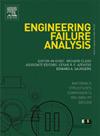核电站的流动加速腐蚀:机制、缓解和管理的详细审查
IF 5.7
2区 工程技术
Q1 ENGINEERING, MECHANICAL
引用次数: 0
摘要
流动加速腐蚀(FAC)是核电厂(NPPs)中最关键的降解机制之一,尤其影响到暴露于高温水和蒸汽流中的碳钢部件。本文综述了FAC机制的全面概述,重点介绍了氧化膜溶解和金属损失的电化学和传质过程。预测建模方法,从半经验模型到现代计算流体动力学(CFD)和机器学习(ML)技术,讨论了它们在不同操作场景下预测FAC进展的能力。详细讨论了环境参数和材料组成等因素对金属FAC率的影响。提供了实验测试方法的详细概述,包括搅拌高压灭菌器,射流冲击装置和旋转笼系统,以及它们在复制真实世界反应堆条件方面的局限性。本文还概述了目前的缓解策略,包括金属配方、化学抑制剂和核电厂适当运行的维护策略。最近的进展强调了合金元素如铬(Cr)和钼(Mo)在稳定保护氧化层中的作用,同时也揭示了CFD模型的重要局限性(例如,验证和表面动力学集成方面的挑战)和ML方法(例如,缺乏可解释性和监管准备)。未来的研究方向强调需要集成、多物理场模型、实时监测系统和先进材料的发展,以确保下一代核反应堆的长期结构完整性和安全性。本文章由计算机程序翻译,如有差异,请以英文原文为准。
Flow accelerated corrosion in nuclear power plants: a detailed review on mechanisms, mitigation, and management
Flow-Accelerated Corrosion (FAC) is one of the most critical degradation mechanisms in nuclear power plants (NPPs), particularly affecting carbon steel components exposed to high-temperature water and steam flows. This review provides a comprehensive overview of FAC mechanisms, highlighting the electrochemical and mass transfer processes responsible for oxide film dissolution and metal loss. Predictive modeling approaches, ranging from semi-empirical models to modern computational fluid dynamics (CFD) and machine learning (ML) techniques, are discussed in terms of their capability to forecast FAC progression under varied operational scenarios. Factors influencing the FAC rate of metals, including the environmental parameters and material composition, are discussed in detail. A detailed overview of experimental testing methods—including stirred autoclaves, jet impingement setups, and rotating cage systems—is provided, along with their limitations in replicating real-world reactor conditions. The paper also outlines the current mitigation strategies, including metal formulation, chemical inhibitors, and maintenance strategies for suitable operation in NPP. Recent advances highlight the role of alloying elements such as chromium (Cr) and molybdenum (Mo) in stabilizing protective oxide layers, while also revealing important limitations of CFD models (e.g., challenges in validation and surface kinetics integration) and ML methods (e.g., lack of interpretability and regulatory readiness). Future research directions emphasize the need for integrated, multi-physics models, real-time monitoring systems, and the development of advanced materials to ensure long-term structural integrity and safety in next-generation nuclear reactors.
求助全文
通过发布文献求助,成功后即可免费获取论文全文。
去求助
来源期刊

Engineering Failure Analysis
工程技术-材料科学:表征与测试
CiteScore
7.70
自引率
20.00%
发文量
956
审稿时长
47 days
期刊介绍:
Engineering Failure Analysis publishes research papers describing the analysis of engineering failures and related studies.
Papers relating to the structure, properties and behaviour of engineering materials are encouraged, particularly those which also involve the detailed application of materials parameters to problems in engineering structures, components and design. In addition to the area of materials engineering, the interacting fields of mechanical, manufacturing, aeronautical, civil, chemical, corrosion and design engineering are considered relevant. Activity should be directed at analysing engineering failures and carrying out research to help reduce the incidences of failures and to extend the operating horizons of engineering materials.
Emphasis is placed on the mechanical properties of materials and their behaviour when influenced by structure, process and environment. Metallic, polymeric, ceramic and natural materials are all included and the application of these materials to real engineering situations should be emphasised. The use of a case-study based approach is also encouraged.
Engineering Failure Analysis provides essential reference material and critical feedback into the design process thereby contributing to the prevention of engineering failures in the future. All submissions will be subject to peer review from leading experts in the field.
 求助内容:
求助内容: 应助结果提醒方式:
应助结果提醒方式:


